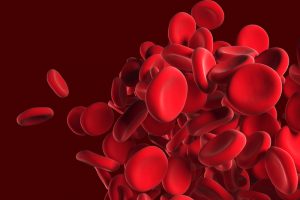
Infusion Therapy for Multiple Sclerosis
Many of the disease-modifying therapies (DMTs) that treat multiple sclerosis (MS) are administered by intravenous infusion. With extensive expertise and experience providing infusion therapy for
Questions on Oncology, Hematology and/or Infusion Clinical Services due to COVID-19 Crisis – CALL 833-698-1623
Important Information for Our Patients Regarding the Coronavirus.
RCCA Providing Area Cancer Patients with Access to Care During Coronavirus Outbreak
RCCA Offering Patients Virtual Visits During Coronavirus Pandemic
Physiological and practical factors can combine to make successfully treating iron deficiency anemia (IDA) with oral iron replacement a daunting task.
Physiologically, achieving a sustained increase in hemoglobin levels depends on identifying and addressing underlying medical conditions, such as heavy menstrual bleeding or peptic ulcer disease, as well as ensuring that the patient takes iron supplements in a manner that facilitates absorption (e.g., on an empty stomach and with a Vitamin C supplement.)
From a practical standpoint, gastrointestinal issues ranging from an upset stomach to constipation are frequent adverse effects of oral iron supplements – and frequently have a significant negative impact on adherence. Studies have reported rates of non-adherence to oral iron regimens ranging from 10% after 2 weeks to 32% after 2 months.1


Given those realities, physicians often find themselves wrestling with the question of how long to pursue correction of IDA with oral iron in the face of an unsatisfactory response. A pooled analysis of five randomized controlled trials provides an answer to that question – and the timeframe it identifies may surprise many clinicians.
The five trials in the analysis included two that studied women with postpartum IDA, one that enrolled women with heavy uterine bleeding, one focused on IDA in the setting of inflammatory bowel disease, and one that evaluated patients with IDA of various etiologies.1 Inclusion criteria for the trials were similar, with most of the studies requiring subjects to have a hemoglobin (Hb) level ≤10-11 g/dL and ferritin <100 ng/mL. While the five studies employed different outcomes measures, the pooled analysis defined a study subject as a responder if he or she had a ≥1.0 g/dL increase in hemoglobin at Day 14.1
As is often the case in clinical trials, compliance rates were higher than those typically seen in everyday practice. Four of the five studies tracked compliance, and recorded rates ranging from 83.9% to 98.5%.1 Even with those high rates of compliance to oral iron regimens, however, more than one quarter of the 738 subjects in the analysis cohort did not achieve a ≥1.0 g/dL increase in hemoglobin at Day 14. There were 537 responders, representing just under 73% of the cohort, and 201 non-responders, constituting 27% of the total. Further, the proportion of study subjects who had a 1.0 g/dL gain in hemoglobin began to diminish after Day 42, as did the proportion of those who had a more-robust Hb increase of at least 2 g/dL.1
The sensitivity, specificity, and positive predictive value of an Hb increase of ≥1.0 g/dL at Day 14 as a predictor of longer-term, sustained response were 90.1%, 79.3%, and 92.9%, respectively.1
To me, the take-away lesson from this analysis is that we should re-check hemoglobin levels between two weeks and one month after initiating oral iron. If the patient reports being unable to adhere to the treatment regimen, or reports being adherent but has lab work showing anything less than a 1.0 g/dL gain in hemoglobin, it’s time to consider alternatives.
In my experience, however, many clinicians can be reluctant to move on from oral iron because they are not enamored with the alternatives – red blood cell (RBC) transfusion and intravenous iron.
Recommendations on red blood cell transfusion vs. iron infusion
Expert opinion tends to take a bifurcated approach to these two options. In a 2019 article published in Hematology as a component of the American Society of Hematology’s Education Program for clinicians, hematologists Shuoyan Ning, MD, and Michelle Zeller, MD, wrote: “IV iron should be considered when there are no contraindications, when poor response to oral iron is anticipated, when rapid hematologic responses are desired and/or when there is availability of and accessibility to the product. Judicious use of red blood cell transfusion is recommended and should be considered only for severe, symptomatic IDA with hemodynamic instability.”2
Similarly, the American Association of Blood Banks’ Choosing Wisely campaign states plainly: “Don’t transfuse red blood cells for iron deficiency without hemodynamic instability.”3 The organization’s statement continues: “Blood transfusion has become a routine medical response despite cheaper and safer alternatives in some settings. Pre-operative patients with iron deficiency and patients with chronic iron deficiency without hemodynamic instability (even with low hemoglobin levels) should be given oral and/or intravenous iron.”3
Despite this guidance, physicians may be hesitant to prescribe intravenous iron because they remember or have heard about incidents from years past when patients had serious adverse events during or following infusion.
Safety should always be our paramount concern, of course, but newer IV iron formulations are much better tolerated than those available many years ago. In fact, a meta-analysis of 103 trials involving 10,390 patients treated with IV iron and 4,044 patients receiving oral iron found no increased risk of serious adverse events or infections with IV iron. As would be expected given their routes of administration, infusion reactions, including severe ones, were seen with IV iron, while gastrointestinal adverse events were far more common with oral iron.4 The risk for infusion reactions should never be minimized, but these events typically are managed swiftly and effectively in infusion centers with experienced staff and appropriate resources.
In summary: 6 steps for managing IDA
In my view, the keys to successful management of iron deficiency anemia include:
Author biographical note: Dr. Dave is a board-certified hematologist and medical oncologist who practices in the Cape May Court House and Marmora, NJ, offices of Regional Cancer Care Associates (RCCA), one of the nation’s largest networks of oncology and hematology specialists.
RCCA has 90+ cancer specialists who treat patients at 25 RCCA care centers located throughout New Jersey, Connecticut, Maryland, and the Washington, DC, area. RCCA oncologists and hematologists see more than 23,000 new patients each year and provide care to more than 225,000 established patients, collaborating closely with their patients’ other physicians. They offer patients the latest in cutting-edge treatments, including immunotherapies and targeted therapy, as well as access to a wide range of clinical trials. In addition to serving patients who have solid tumors, blood-based cancers, and benign blood disorders such as anemia, RCCA care centers also provide infusion services to people with a number of non-oncologic conditions—including multiple sclerosis, Crohn’s disease, asthma, iron-deficiency anemia, and rheumatoid arthritis—who take intravenously-administered medications.
To learn more about RCCA, call 1-844-346-7222 or visit RCCA.com.
References:
Infusion therapy has been a mainstay of cancer treatment for decades, starting with chemotherapy and today also including many targeted therapies and immunotherapies.
Turning to conditions beyond cancer, however, infused medications are used to treat Crohn’s disease and ulcerative colitis, multiple sclerosis, iron-deficiency anemia, rheumatoid and psoriatic arthritis, plaque psoriasis, some forms of asthma, chronic pain, and immune-deficiency disorders, among others conditions.
Many people, including postmenopausal women and men being treated with hormonal therapies for prostate cancer, receive infusions to protect their bone health and prevent osteoporosis. Antibiotics sometimes will be infused to control and cure a particularly fast-moving or dangerous infection. Further, some people are born with problems of metabolism or other conditions that require periodic infusions to replace enzymes critical to their health.
An intravenous (IV) drip also can provide nutrition, medication, and rehydrating fluids to people experiencing nausea and vomiting due to pregnancy, illness, or medication side effects.
It is important to talk with your physician about why he or she prescribed a specific treatment for you, but there are several reasons a doctor might choose an infused therapy.
The monoclonal antibody therapies that have revolutionized the treatment of conditions ranging from multiple sclerosis and rheumatoid arthritis to Crohn’s disease and COVID-19 consist of proteins that would be degraded and lose their effectiveness if they were taken in pill form and exposed to the digestive functions of the gastrointestinal system.
In other cases, a physician may choose an infused therapy over an oral medication when it is important to deliver the drug quickly, such as when a patient has an aggressive infection that the doctor wants to contain and then eradicate.
No. Infusions once were administered exclusively in hospitals, but over the last 20 years or more, community-based infusion therapy centers have established themselves as a safe, cost-effective, and convenient alternative to receiving infusions in the hospital setting. These centers are equipped to deliver infusion therapy in a comfortable environment and are staffed with clinicians who specialize in managing every aspect of infusion treatment. More recently, some infused medications have been delivered in patients’ homes by a trained nurse.
In my experience, a community-based infusion center represents an ideal balance in terms of offering the convenience and cost-effectiveness that you may not have in the hospital, and the access to a team of clinicians and breadth of resources for dealing with side effects that you won’t have when an individual clinician is providing care in your home.
All medications carry some risk of adverse effects, and that risk varies among IV agents – just as it does among oral medications. Your physician will counsel you on side-effect risks and will choose the medication and dosage designed to provide the most benefit with the least likelihood of a side effect.
Regardless of which medication is infused, people may experience pain, redness, swelling, or tenderness at the injection site during and sometimes after the infusion. These things do not occur in many cases, but they are the adverse effects we see most often. They typically are mild and of short duration. Other adverse effects tend to be specific to the particular medication you are receiving.
At RCCA, our nurse practitioners, nurses, and pharmacy personnel are thoroughly familiar with each of the dozens of medications we infuse – not just for cancers but for the other conditions I mentioned above. Before an infusion, we thoroughly educate the patient on the medication, why it is being given, and what to expect – including potential side effects. Should there be an issue or concern, a physician is just steps away, and our team has the training and our centers have the resources to manage side effects, should they occur.
Further, RCCA’s infusion centers follow rigorous procedures to guard patients’ well-being. For example, our centers have specially designed “mixing areas” where medications are prepared for infusion in a manner that prevents airborne contaminants from infiltrating the medicine.
As infusion therapy becomes more prevalent, the regulations that govern preparation and administration of infused therapies are becoming increasingly stringent. We view this as a good thing, and at RCCA we stay abreast and ahead of regulatory changes, thoroughly complying with all new requirements.
Infusion time varies widely by medication. Some agents need to be infused over 2 hours or longer, while others can be delivered in 30 minutes.
Regardless of the medication and its administration time, receiving an infusion at a community-based clinic is considerably more efficient and convenient than hospital-based care. For example, when you come to an RCCA office, you park near the entrance, sign in, are assessed and counseled, receive your infusion, and get on with your day. At a hospital, the intake process alone can be quite time-consuming.
Infused therapies typically are covered by insurance but are subject to the same requirements, such as prior authorization, as other medications.
One important consideration in terms of coverage is out-of-pocket cost to the patient. The cost of an infusion in a hospital may be twice as expensive as the cost of receiving the same infusion in a community-based clinic. Because hospitals have considerable overhead costs, they generally have contracts with insurers that allow them to charge higher rates than community clinics. Hospitals also routinely pass their overhead expenses on to their patients in the form of administration fees, steep co-pays, and other out-of-pocket expenses.
Because of this cost differential, many insurers have begun requiring that patients receive infusions in community-based centers whenever possible.
Yes. The added convenience of receiving infusion therapy at a community-based clinic is a game-changer for many patients who see specialists at academic medical centers in New York, Philadelphia, or elsewhere.
Many people who receive infusions at an RCCA center near their home “go to the city” two or three times a year to see their neurologist, gastroenterologist, or other specialist but don’t want to travel there for regular infusions. Instead, they come to one of our centers, where they can receive care in a friendly, relaxed surrounding. Meanwhile, we have excellent working relationships with our infusion patients’ physicians. If, for example, a question arises concerning infusion therapy for a patient with multiple sclerosis, our team can quickly contact the referring neurologist for clarification.
In the case of RCCA, the many people who come to us to receive infusions for conditions other than cancer do so because of the convenience, the cost benefits, the expertise of our team and — perhaps more than anything else — the patient-care experience. Our staff comes to know all of our patients quite well, and provides compassionate, individualized care. We make people’s time here as relaxing as possible. Our infusion areas are specially designed to give each patient privacy while ensuring that he or she looks out on an open area so that they don’t feel “closed in.”
In short, our long experience with infusion therapy not only for cancer but for a wide range of conditions enables us to provide expert care close to home. RCCA has more than 24 offices throughout New Jersey, Connecticut, Maryland and the Washington, D.C., area. For more information on the infused therapies and other services offered by RCCA, call (844) 928-0089 or visit RCCA.com.
For more information, or to schedule an appointment, call 844-474-6866. You can also schedule an appointment by calling the RCCA location nearest you.

Many of the disease-modifying therapies (DMTs) that treat multiple sclerosis (MS) are administered by intravenous infusion. With extensive expertise and experience providing infusion therapy for

Anemia is a blood disorder caused by low levels of iron-rich red blood cells. The iron deficiency that accompanies anemia can range from mild to

People with rheumatoid arthritis can experience pain, discomfort, and even immobility that can wreak havoc on their everyday lives. Finding the best treatment option can